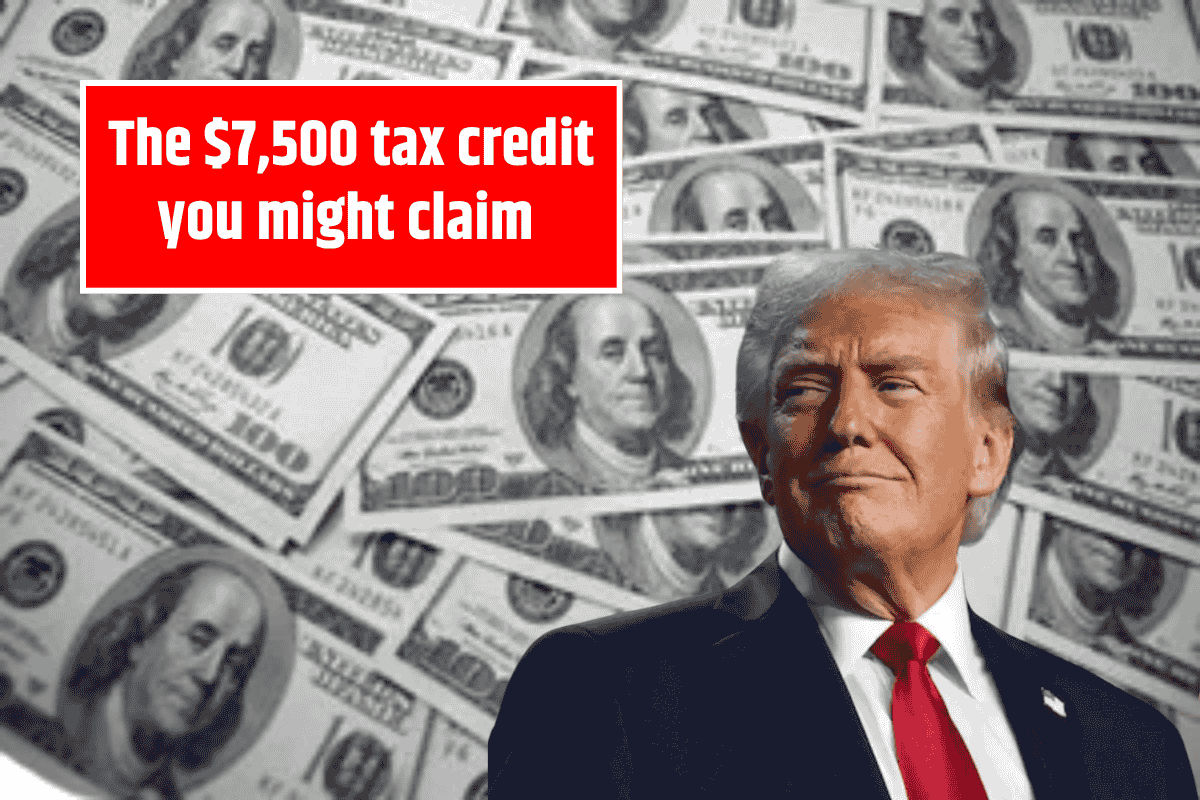With Donald Trump’s return to the White House, major shifts in the nation’s economic policies are taking place, including changes that could affect tax benefits for American consumers. One significant change involves the electric vehicle (EV) tax credit, which has been a crucial incentive for the adoption of sustainable transportation technologies.
This credit, originally established in 2008 under the Emergency Economic Stabilization Act, could face elimination under Trump’s new proposals. Here’s what you need to know about this evolving issue.
The History of the EV Tax Credit
The EV tax credit was introduced to promote the use of electric vehicles by offering up to $7,500 for the purchase of new EVs. Initially, the credit was limited by a cap for each manufacturer—once 200,000 EVs were sold by a manufacturer, the tax credit would begin to phase out.
Tesla and General Motors (GM) reached this cap in 2018 and 2020, respectively, which caused their eligibility for the credit to gradually decrease.
However, in 2022, the Inflation Reduction Act reformed the system, removing the manufacturer-specific cap and adding new benefits for used vehicles. These reforms allowed for:
$7,500 for new EVs (subject to specific conditions).
$4,000 for used EVs (subject to eligibility).
$1,000 for home chargers (if installed before 2025).
Requirements for Claiming the EV Tax Credit
There are strict conditions to be met in order to qualify for the EV tax credit, both for new and used vehicles.
New Electric Vehicles
Minimum battery capacity: 7 kWh.
Assembly: Must be assembled in North America.
Price limit: Must not exceed $80,000 for SUVs/pickup trucks or $55,000 for sedans.
Increasing local component requirements: Starting in 2024, a growing percentage of components must be sourced locally.
Used Electric Vehicles
Income limits:
$300,000 for couples.
$225,000 for heads of household.
$150,000 for singles.
Price limit: The vehicle must cost less than $25,000 and be at least two years old.
The credit can be claimed through IRS-registered dealers. Starting in 2024, buyers can transfer the credit to the seller for an immediate discount.
The Proposal to Eliminate the EV Tax Credit
President Donald Trump has proposed eliminating the EV tax credit, a move he believes will help reduce market distortions caused by government subsidies.
This proposal is included in his “One Big, Beautiful Bill,” introduced in May 2025, which aims to cut taxes by eliminating certain incentives, including the EV credit. The proposal would:
End the $7,500 credit for new EVs and the $4,000 credit for used EVs after 2025.
Cancel home charger credits.
Impose a $250 annual fee on EV owners.
The elimination of these incentives is intended to redirect funds toward tax cuts for businesses and individuals.
Potential Impact of Eliminating the EV Tax Credit
Experts predict that removing the EV tax credit could have serious consequences for the electric vehicle market. According to a study from Princeton University, the removal of these incentives could lead to a 40% drop in EV sales by 2030.
Manufacturers like GM and Ford would likely increase prices, with the Chevrolet Equinox EV expected to rise from $26,100 to $33,600.
In addition to the market effects, there could be environmental consequences. Harvard University estimates that without the EV tax credit, 49 million more tons of carbon could be released by 2030, slowing progress on reducing greenhouse gas emissions.
The Debate Over the EV Tax Credit
While Trump’s proposal has gained traction, it faces strong opposition. Many automotive manufacturers, including those represented by the Alliance for Automotive Innovation, argue that the EV credit is essential for sustaining the competitive advantage of U.S. manufacturers in the global market.
Countries like China and members of the European Union offer their own EV incentives, which helps maintain demand for EVs.
States like Georgia and Ohio, which have heavily invested in EV manufacturing, are also worried about the loss of jobs and economic impacts if the credit is eliminated.
The future of the EV tax credit is uncertain as President Trump’s administration seeks to reduce government spending and tax incentives. While the credit has been an important tool for encouraging the use of electric vehicles, its potential elimination could significantly impact both the EV market and environmental goals.
As the debate continues, consumers, manufacturers, and policymakers will need to closely watch how these changes unfold.
